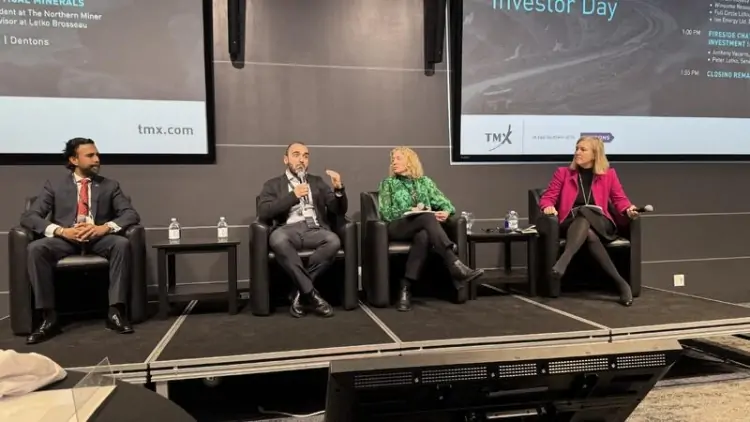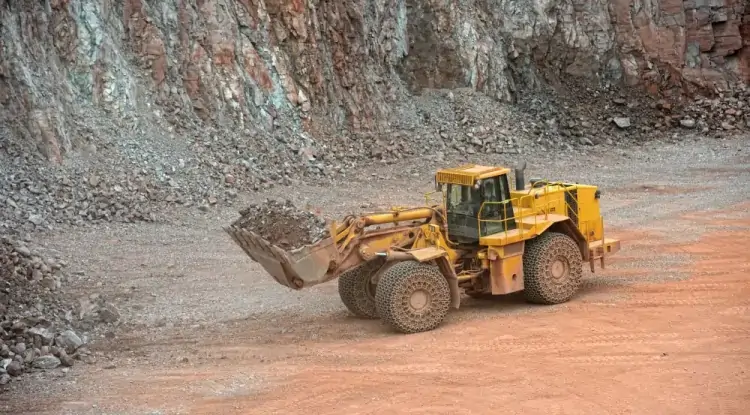Lithium on its way up, hopeful juniors say
Despite the 80% retreat in lithium prices over the past year, junior companies in the space are confident in the long-term view for the battery metal.


Four executives in the lithium sector joined a panel at Lithium Investors Day on Thursday in Toronto, with their companies representing different stages of the lithium development cycle and working in places as geographically distant as Mongolia and the southern United States.
“I think lithium is on its way up. We are seeing a bit of a recovery in China,” said Ali Haji, CEO of the Mongolia-focused Ion Energy (TSXV: ION). “The decrease that we’ve seen over the last 12 months or so is largely attributed to the excess (lithium) inventory that sits in China today.”
The lithium conference, hosted at the Toronto Stock Exchange, took place as prices of the critical metal have fallen by more than 80% from their high in late 2022. Lithium carbonate, a precursor to lithium hydroxide used in electric vehicle batteries, was at 98,500 yuan (US$13,703) per tonne on Thursday, down from about 170,000 yuan in September, according to Trading Economics. Lithium’s price drop has spurred some miners to cut production and undertake cost-savings measures, such as layoffs.
While panelist Carlos Vicens, CEO of Full Circle Lithium (TSXV: FCLI) didn’t suggest a price rise is imminent, he said lithium prices will have to rise eventually if governments are to achieve their stated net-zero emissions targets by 2050. That goal entails mining vastly more critical minerals than are currently being produced, he explained, citing a slide from Nano One Material CEO Dan Blondal that showed reaching net zero by 2050 will require 300 terawatt hours of installed batteries, and installing another 20 terawatt hours of batteries each year.
“A lot of people say, what’s the cure for high prices? High prices! Because it brings a whole bunch of supply into the market,” said Vicens, whose company operates a lithium recycling plant in Georgia.
Hunt for financing
Even though Genevieve Morinville, VP sustainability and regulatory affairs with Australia-based Winsome Resources (ASX: WR1), touted the willingness of Aussie investors to support high-risk projects, she said Canada offers unique financing opportunities. The Perth-headquartered company is developing its Adina flagship project in the James Bay region of Quebec.
“(There are) economic advantages,” she said. “For example, being able to take advantage of the charity flow through funding and some of the other tax credits that are available to us, makes it very exciting from an Australian perspective to then invest within Quebec.”
Haji, however, struck a more cautious note on Canada’s financing climate, as he outlined the progress of Ion’s Baavhai Uul and Urgakh Naran lithium brine projects in Mongolia. Since the company launched in 2017, it raised cash from its IPO, a bond deal and a non-brokered placement from a combination of North American, European and Asian investors.
“Ninety-nine per cent of our capital raised was from outside of Canada and the 1% that was from Canada was management and insiders,” he said. “So that goes to show that we need more support from the Canadian market. This is the time for us to come in and really lift up all these critical elements.”
Price rise on horizon
The Ion boss was more optimistic about an uptick in the price of lithium, and attributed potential catalysts to economic recovery in Asian countries and higher spending among consumers in the West.
“The macro issues that we’re facing today, with high interest rates and the like, are not about to go out anytime soon,” he said. “But as we start to see economies recover and perhaps government subsidies introduced in regions that they have not existed, and the proliferation of the LFP battery, which is cheaper as an entrant for the consumers, I think we’ll start to see prices recover.”
Vicens sketched out a larger picture of what will be needed for prices to rise, saying that if more sectors of industrial economies start to back lithium to support the energy transition, then capital will flow in and prices will go up.
“(These are) large capital commitments and risky jurisdictions with new technologies. Imagine the level of risk that you’re putting all together,” he said. “So, when you have all these massive companies that can invest billions, hundreds of billions into the industry, that’s when you take it from here to what we need on 300 terawatt hours in 2050.”
Panel moderator Dominique Barker, who is CFO of Lithium Royalty (TSX: LIRC) said that in the long-term, processing capacity will have to become more diversified outside China for prices to stay higher.














